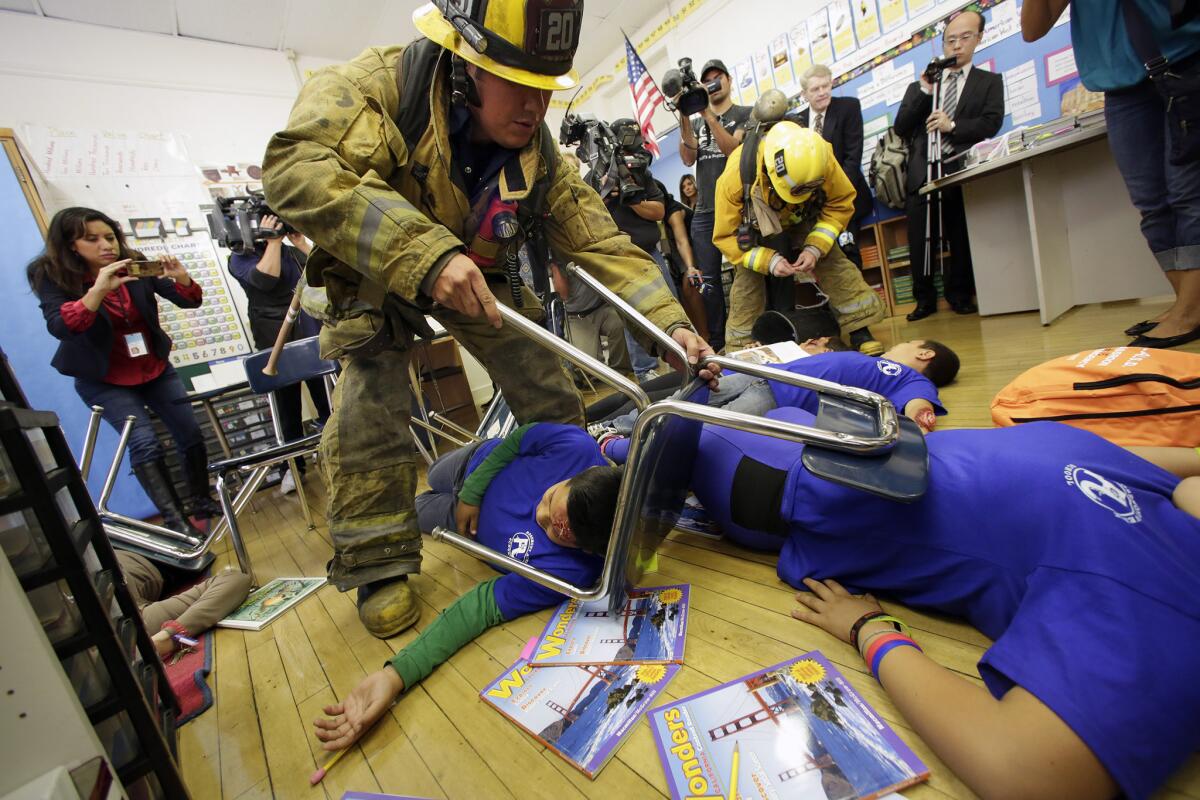Experts urge earthquake preparedness, even for the experienced

- Share via
Reporting from Washington — In 2011, the ground beneath Louisa County, Va., began shaking. By the time the earthquake stopped, one-third of the U.S. population may have felt its tremors.
For officials at its epicenter, where some of the county’s schools were damaged beyond repair, it was a surprising wake-up call.
“We weren’t even sure what an earthquake was in Louisa County at that time,” said Doug Straley, a superintendent of the county’s schools. “Now earthquake drills are an annual event.”
He joined an array of earthquake researchers and emergency management officials to urge preparedness and awareness in Washington on Tuesday, saying that a lack of preparation could have dangerous consequences in a natural disaster.
That brief 5.8 magnitude earthquake in 2011 may not have ranked high by West Coast standards, where earthquakes with 5.5 or higher magnitude occur on average several times per year. But California residents shouldn’t mistake familiarity with complacency, said Mark Benthien, outreach director for the Southern California Earthquake Center.
“Californians have a lot more earthquake experience but they are smaller experiences,” Benthien said. “A 5.0 earthquake is really an opportunity to practice.”
He said that standard advice, like sheltering in doorways, is becoming outdated, as officials learn from such past experiences as the 1994 Northridge earthquake, which devastated parts of Southern California, to revise safety guidelines.
The experts met ahead of a drill planned worldwide Thursday, when an estimated 25 million people will practice earthquake response and safety. Roughly 10 million Californians will participate in the one-day “drop, cover and hold on” drill, Benthien said.
In an earthquake, experts recommend people drop on the ground, seek cover under a protective surface like a desk and brace themselves until the shaking stops.
Even as they urge communities to practice emergency response, officials say they are also improving earthquake detection and prediction. The U.S. Geological Survey released revised hazard maps for seismic activity nationwide this year. While California remains one of the states at highest risk for earthquakes, researchers actually reduced earthquake hazard predictions for areas including Santa Barbara and Irvine. San Diego and San Jose were among the areas where earthquake hazard estimates were raised on the revised map, as researchers discovered new faults in the regions.
Officials are also testing an early detection and warning system for the West Coast, hoping to eventually give residents one minute or more of warning time, as well as send updates and information to smartphones. During the 6.0 earthquake centered in Napa in August, the system offered five seconds of warning.
Though seconds may seem inadequate, not being caught by surprise can be a crucial benefit, said Suzette Kimball, who directs the U.S. Geological Survey.
“For areas about to be rocked by seismic waves, those seconds can give emergency managers and the public time to prepare,” she said.
Follow Matt at @mtthnsn
More to Read
Sign up for Essential California
The most important California stories and recommendations in your inbox every morning.
You may occasionally receive promotional content from the Los Angeles Times.













